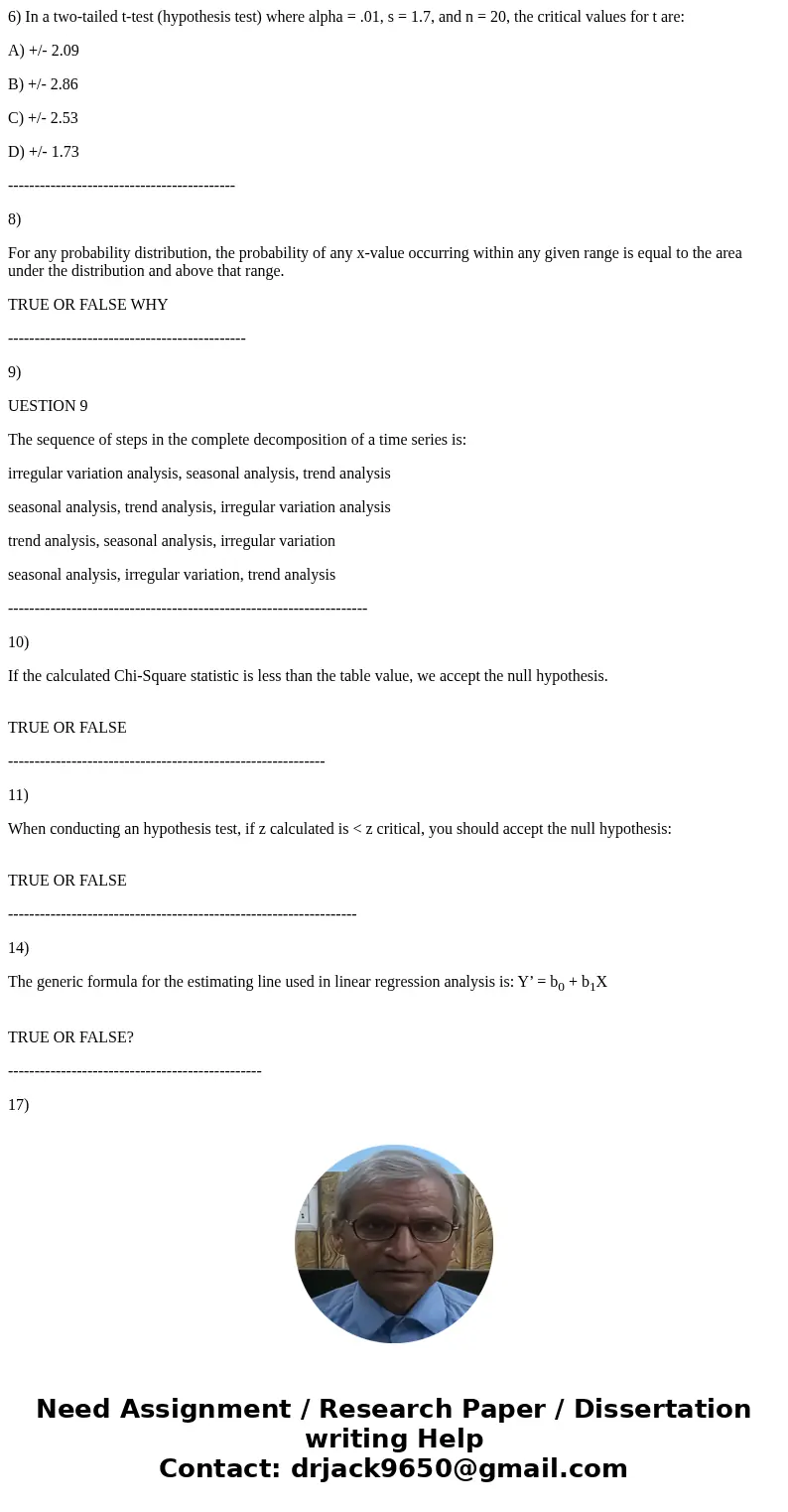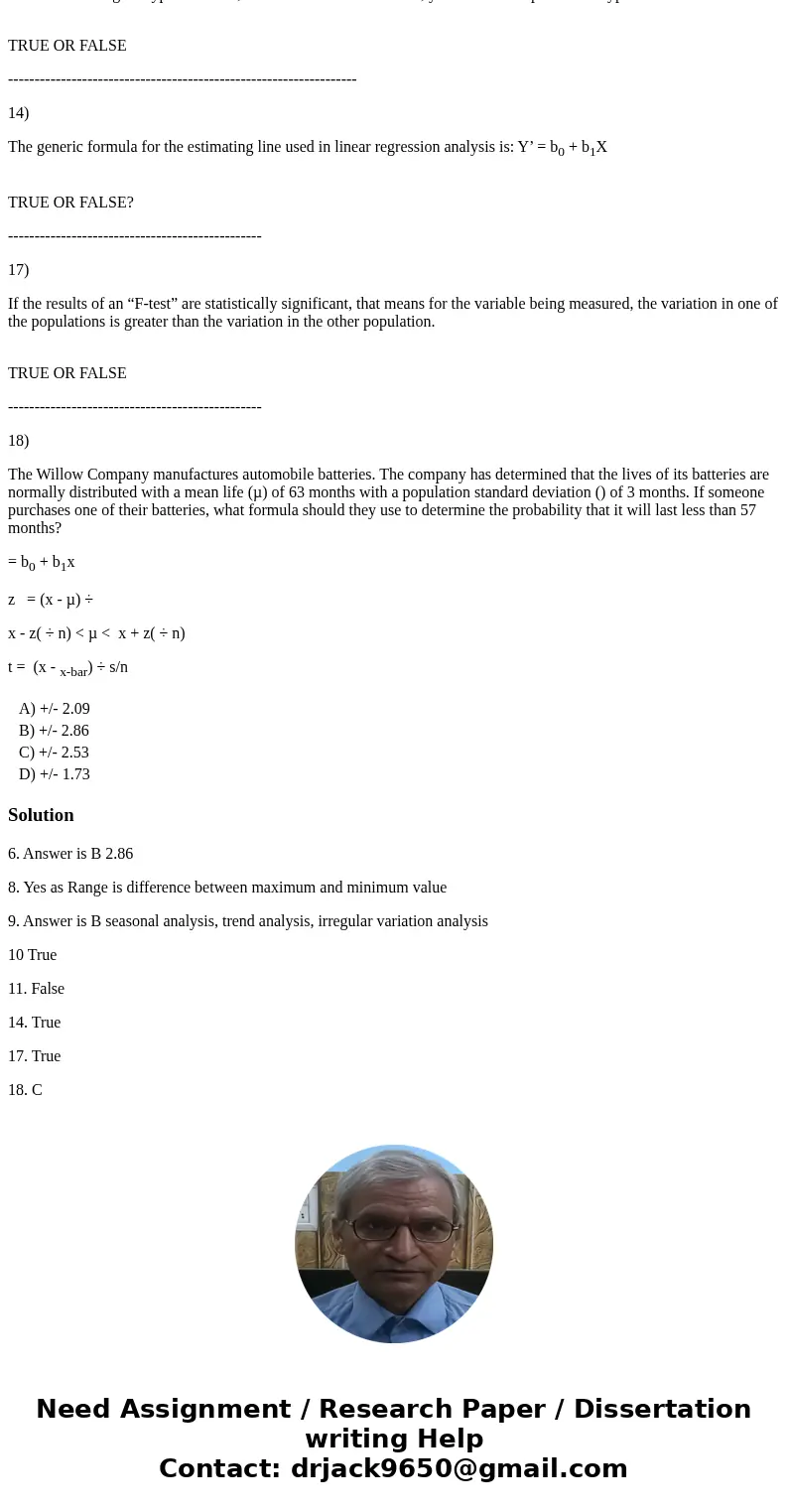6 In a twotailed ttest hypothesis test where alpha 01 s 17
6) In a two-tailed t-test (hypothesis test) where alpha = .01, s = 1.7, and n = 20, the critical values for t are:
A) +/- 2.09
B) +/- 2.86
C) +/- 2.53
D) +/- 1.73
-------------------------------------------
8)
For any probability distribution, the probability of any x-value occurring within any given range is equal to the area under the distribution and above that range.
TRUE OR FALSE WHY
---------------------------------------------
9)
UESTION 9
The sequence of steps in the complete decomposition of a time series is:
irregular variation analysis, seasonal analysis, trend analysis
seasonal analysis, trend analysis, irregular variation analysis
trend analysis, seasonal analysis, irregular variation
seasonal analysis, irregular variation, trend analysis
--------------------------------------------------------------------
10)
If the calculated Chi-Square statistic is less than the table value, we accept the null hypothesis.
TRUE OR FALSE
------------------------------------------------------------
11)
When conducting an hypothesis test, if z calculated is < z critical, you should accept the null hypothesis:
TRUE OR FALSE
------------------------------------------------------------------
14)
The generic formula for the estimating line used in linear regression analysis is: Y’ = b0 + b1X
TRUE OR FALSE?
------------------------------------------------
17)
If the results of an “F-test” are statistically significant, that means for the variable being measured, the variation in one of the populations is greater than the variation in the other population.
TRUE OR FALSE
------------------------------------------------
18)
The Willow Company manufactures automobile batteries. The company has determined that the lives of its batteries are normally distributed with a mean life (µ) of 63 months with a population standard deviation () of 3 months. If someone purchases one of their batteries, what formula should they use to determine the probability that it will last less than 57 months?
= b0 + b1x
z = (x - µ) ÷
x - z( ÷ n) < µ < x + z( ÷ n)
t = (x - x-bar) ÷ s/n
| A) +/- 2.09 | ||
| B) +/- 2.86 | ||
| C) +/- 2.53 | ||
| D) +/- 1.73 |
Solution
6. Answer is B 2.86
8. Yes as Range is difference between maximum and minimum value
9. Answer is B seasonal analysis, trend analysis, irregular variation analysis
10 True
11. False
14. True
17. True
18. C


 Homework Sourse
Homework Sourse